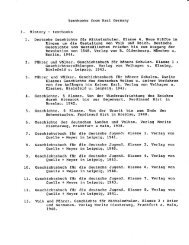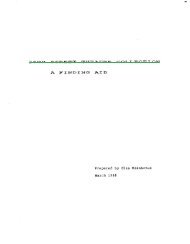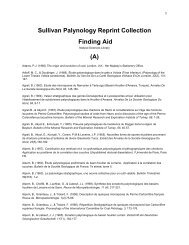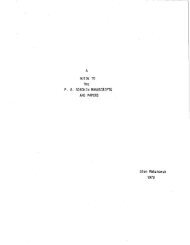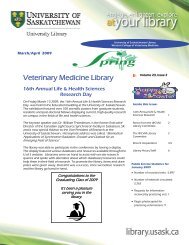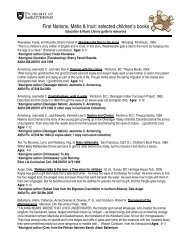GREEN SEED COAT COLOUR RETENTION IN LENTIL - University ...
GREEN SEED COAT COLOUR RETENTION IN LENTIL - University ...
GREEN SEED COAT COLOUR RETENTION IN LENTIL - University ...
Create successful ePaper yourself
Turn your PDF publications into a flip-book with our unique Google optimized e-Paper software.
temperatures. The more enzyme activity measured in the canola seed the less<br />
chlorophyll remained in the seed at harvest maturity (Tsang et al., 2003). Johnson-<br />
Flanagan et al. (1994) reported that the enzymes peroxidase and chlorophyllase<br />
break down the chlorophyll in canola seeds. Both lead to chlorophyll degradation<br />
and reflect different wavelengths of light causing a different colour being detected.<br />
Another important type of chlorophyll loss occurs from photo bleaching.<br />
Environmental factors like frost can inhibit the ability of the plant to degrade<br />
chlorophyll. This most likely occurs as the cold temperature prevents the enzymes<br />
from degrading chlorophyll during rapid seed desiccation. Several days after a frost<br />
event the chlorophyllase and peroxidase activity may return to pre-frost levels as<br />
long as the frost was not lethal to the plant. Johnson-Flanagan et al. (1994) also<br />
report that the use of humidification on the seed, below the level required for<br />
germination, will increase the activity of chlorophyllase and peroxidase after a non<br />
lethal frost. In the field, moist weather could possibly increase enzyme activity and<br />
further reduce the amount of chlorophyll in the seed. If canola seed is harvested at<br />
too high a moisture content before the seed was fully ripened, the chlorophyll<br />
content in the cotyledon would be difficult to reduce by environmental means. The<br />
frequency of green cotyledons is usually reduced in the field by natural air drying<br />
after swathing. If canola seed is dried artificially in commercial grain dryers the<br />
chlorophyll would not be reduced even though the moisture content is reduced to a<br />
level that is conducive to long term storage (Cenkowski et al., 1989a). In lentil this<br />
would translate into beginning harvest prior to optimum moisture content for<br />
storage, which could produce a more desirable sample.<br />
17



